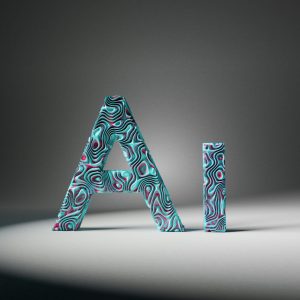Microsoft Just Changed the Game—Are You Paying Attention?
AI isn’t the future of software development. It’s the present.
Microsoft, one of the world’s biggest technology powerhouses, is going all-in on AI-first engineering—and they’re not alone.
🚀 Microsoft just hit an all-time high of $1.36 million in revenue per employee (Q4 2023 Earnings).
🤖 GitHub Copilot is now writing 46% of all new code (GitHub, 2024).
💡 AI-driven DevOps reduced deployment times by 70% (Amazon, 2023).
📉 Traditional software engineering job postings dropped 70% in 18 months (Indeed, 2024).
Tech giants aren’t hiring massive engineering teams anymore.
Instead, they’re optimizing for smaller, AI-augmented engineering teams that ship faster, work smarter, and rely on automation instead of headcount.
If your company is still running software development like it’s 2019, you’re already behind.
Let’s break down why Microsoft is betting big on AI-first engineering—and why your business should follow their lead.
Microsoft’s AI-First Strategy: A Masterclass in Business Optimization
- AI Is Becoming the Default for Developers
Microsoft isn’t just using AI—they’re building AI-powered development ecosystems that redefine how software gets made.
- GitHub Copilot (owned by Microsoft) is now an essential tool for developers, reducing coding time by 55% on average (McKinsey, 2023).
- Azure AI Services provide pre-trained AI models for businesses to integrate AI capabilities without needing large AI teams.
- Microsoft Dev Box is an AI-powered developer environment that automates setup, testing, and deployment—removing bottlenecks and reducing errors.
➡️ What this means for businesses:
Your dev team is no longer just writing code—it’s curating and optimizing AI-generated solutions. Companies that leverage AI-first development cut costs and accelerate time-to-market by automating repetitive engineering work.
- Microsoft’s Record-Breaking Efficiency Model
Microsoft isn’t just innovating—they’re doing more with fewer people.
- Revenue per employee skyrocketed to $1.36M in 2023—a direct result of AI-powered automation replacing human inefficiencies (Microsoft Earnings Report).
- Microsoft reduced software testing cycles by 50% using AI-driven DevOps, allowing engineers to focus on higher-value tasks.
- Azure AI-driven monitoring tools reduced cloud infrastructure costs by 30%, optimizing resource allocation automatically.
➡️ What this means for businesses:
If your company is still measuring engineering success by headcount instead of output, you’re operating under an outdated model. AI-first teams deliver more impact with fewer engineers—and smart companies are restructuring accordingly.

- AI Is Redefining What It Means to Be an Engineer
Microsoft understands that software development isn’t just about coding anymore—it’s about integrating AI tools effectively.
The traditional full-stack developer is being replaced by the AI-augmented engineer, who:
✅ Works with AI pair programmers like GitHub Copilot to generate code.
✅ Leverages low-code/no-code AI-powered tools to accelerate development.
✅ Uses AI-driven DevOps to automate testing, security, and deployment.
This shift is already happening:
📉 Entry-level software engineering jobs are disappearing as AI fills the gaps (Indeed, 2024).
📈 AI-assisted development reduces time-to-market by up to 80% (McKinsey, 2023).
💰 Companies investing in AI-first engineering are seeing 30-50% higher ROI (Forrester, 2024).
➡️ What this means for businesses:
If you’re hiring developers without AI expertise, you’re hiring for yesterday’s needs. The best engineers today are AI-empowered problem solvers—not just coders.
Why Your Business Needs an AI-First Engineering Strategy—Today
Microsoft’s AI-first approach isn’t just for big tech. It’s a blueprint for every company that builds, scales, or relies on technology.
Here’s how businesses can adapt and thrive:
✅ 1. Shift from Large Dev Teams to AI-Augmented Engineering
- Lean, AI-powered engineering teams deliver the same impact with 30-50% fewer resources.
- AI-driven tools handle testing, debugging, documentation, and even security audits—reducing manual overhead.
✅ 2. Invest in Microsoft’s AI Ecosystem
- GitHub Copilot for AI-assisted coding.
- Azure AI Services for automated AI model deployment.
- AI-driven DevOps for faster, more reliable software releases.
✅ 3. Hire for AI Fluency, Not Just Coding Skills
- Look for engineers who can integrate AI into workflows, not just write code.
- Train existing teams in AI-assisted software development to stay competitive.
✅ 4. Automate Your Engineering Processes
- Use AI-powered CI/CD pipelines to reduce deployment time.
- Implement AI-driven monitoring to cut cloud infrastructure costs.
- Reduce reliance on manual testing and debugging with AI-based QA tools.
Final Thoughts: Adapt or Fall Behind
The world’s biggest tech company just made its biggest bet yet—on AI-first engineering.
The companies that follow suit will gain an insurmountable competitive edge. Those that don’t? They’ll be outpaced, out-innovated, and left behind.
The shift isn’t coming—it’s already here.
How fast your company adapts to AI-driven development will determine your future.
Will you be leading the next wave of AI-first businesses—or struggling to catch up?
💡 The choice is yours.
